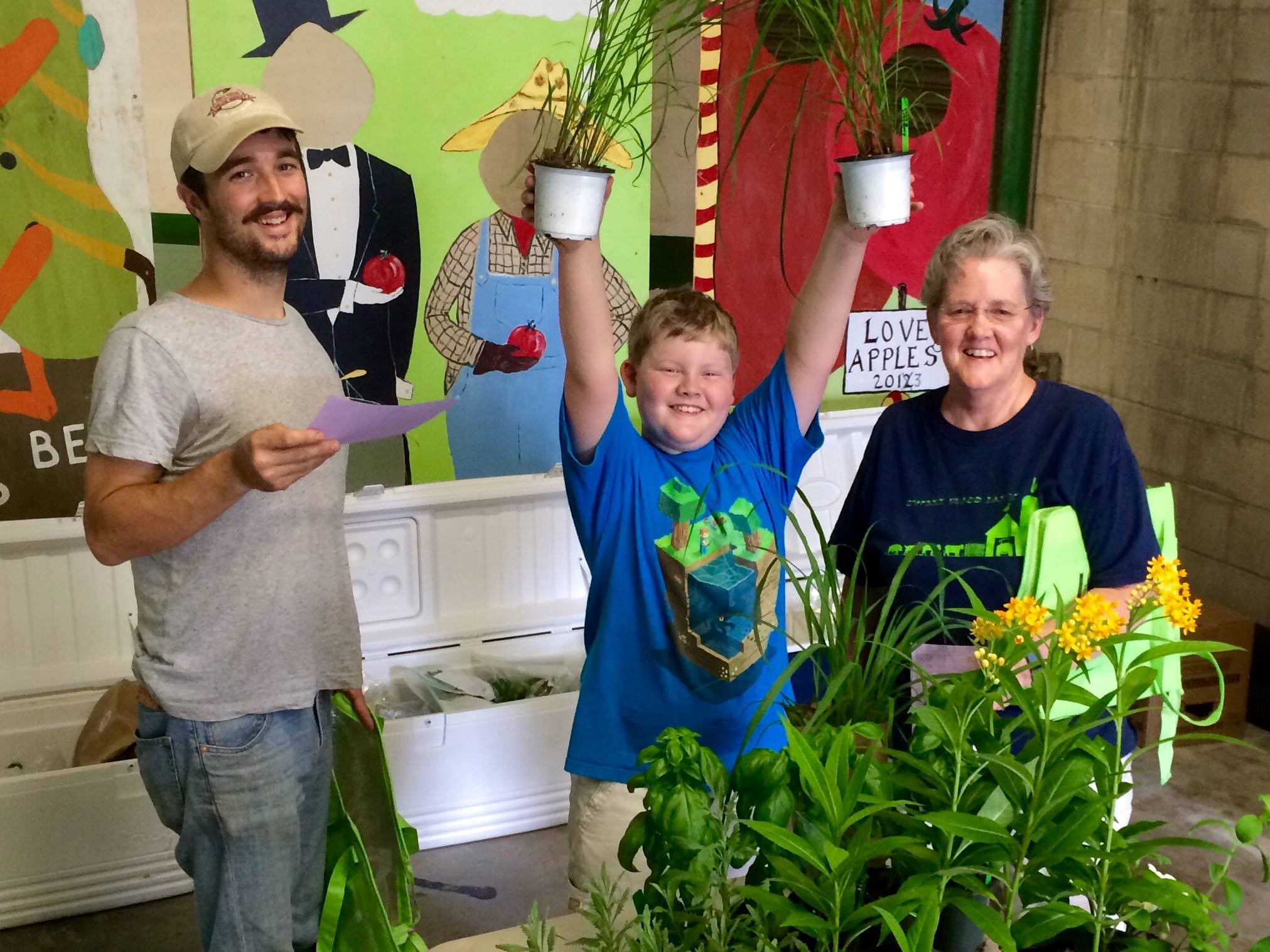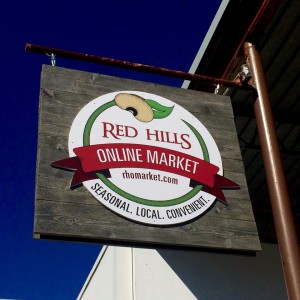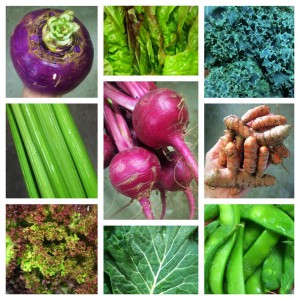
Announced at the National Ag Day in Washington, D.C., the Red Hills Small Farm Alliance (RHSFA) became one of the Top 100 Honorees recognized by the National Farm Credit System for Entrepreneurship and Innovation. The Farm Credit 100 Fresh Perspectives honorees include leaders and visionaries from across the country. The RHSFA was selected by a distinguished panel of agricultural industry representatives from a pool of 1,100 nominees. The farms and organizations highlighted through this program are creating the future of agriculture and rural America through their dedication and innovation.
RHSFA was formed by east Florida Panhandle farmers, Louise Divine of Turkey Hill Farm and Katie Harris of Full Earth Farm, in 2010 as a means to strengthen our small farm community and expand our local food market to more citizens within our region. The RHSFA allows farmers – who may otherwise only see one another as competitors – to work together, share insights and ideas, and mentor new farmers, as they promote local agriculture.

One of the innovative components of the RHSFA that contributed to this agricultural distinction is the Red Hills Online Market (RHO Market). The RHO Market, which opened in 2011, allows farmers and producers within 100 miles of Tallahassee to join the RHSFA and apply to list their products on the online platform. It also allows customers the convenience of ordering and paying for local produce online, with the ability to pick up their orders at one of several convenient locations each week or have them delivered directly to their doorsteps for a small fee.
The RHO Market gives local farmers the ability to harvest only what has been sold and the flexibility to deliver the produce to one distribution center, freeing them from hours at a traditional farmers’ market. Increasing efficiency for farmers and convenience for customers has allowed the RHO Market to grow 30 percent annually, with over 400 customers purchasing from 41 local farmers. In 2015, this earned RHSFA farmers $85,000.
Alliance Co-director Katie Harris, as quoted in the online description of the Farm Credit 100 Honorees, said, “I hope to achieve steady growth in the farming community, whether that be fostering new farmers or helping existing farms expand. I hope to do this through providing a reliable and innovative economic outlet for farmers that is convenient to both farmers and consumers alike.”
The RHSFA also offers educational opportunities, including the Seven Days of Local Delights. This is a week-long campaign event held annually, directly following the New Leaf Farm Tour, offering over 20 workshops about supporting, using, and growing local food.

As the RHSFA and RHO Market expand, so does the appreciation for locally grown produce. This growth contributes to the ability of farmers to increase production, encourages new farmers to begin farming, and also connects people to the food they are consuming and to local agricultural production.
According to a Civic Economics Andersonville Study of Retail Economics, for every $100 that is spent at an independent business, $68 returns to the local economy. By comparison, only $43 returns to the local economy when spent at a national chain. This means that if every family spent $10 per month at locally owned businesses instead of national chains, over $9.3 billion would return directly to local economies.
Buying local will also keep the Florida Panhandle unique, support community groups, reduce environmental impacts, create jobs, and will encourage local prosperity overall. For 2011-2012, the total value of local foods purchased in Florida was estimated at $8.3 billion, generating an estimated 183,625 jobs, $6.5 billion in labor income, and $10.5 billion in value-added contributions to the Gross State Product.
Visit the Red Hills Small Farm Alliance website at to find out more about the alliance, or the farmers and the Red Hills Online Farmers Market to see innovative way this group is marketing locally produced foods.
For more information on buying local produce, please see the following publications:
 0
0

Comments:
September 21, 2021
Hi Sara, Thank you for your comment! Edible ginger, Zingiber officinale, is not considered invasive and can be planted in the soil or in a pot. Here is more information, including additional links about ginger, how to grow it, and how to harvest the roots: https://gardeningsolutions.ifas.ufl.edu/plants/edibles/vegetables/ginger.html Thank you and please let us know if you have any additional questions! Sincerely, -UF/IFAS Leon County Extension
September 20, 2021
Is edible ginger invasive or does it have a lot of spread (like Boston? ferns)? The ginger sprouted in a pot from buying a fresh organic root at the grocery store. Should I plant the ginger in my yard or keep it in a pot?
October 7, 2020
It may be an urban legend, but I've heard that they irradiate or treat some ginger to prevent it from growing. I always look for fresh growth nubs on ginger if I'm looking for some for planting.
August 22, 2016
Hi Ann, Sorry for the confusion. What I meant to say is that while spinosad is safe in vegetable gardens, not all organic materials are safe. Rotenone and nicotine sulfate are examples of organic materials that are not safe in vegetable gardens. Does that help? -Molly Jameson
August 20, 2016
Must be in the same family as the cypress vine - it stinks too.
August 19, 2016
In paragraph six it states that spinosad is safe for use in vegetable gardens. And then in the same paragraph say it should not be used in a vegetable garden. I'm confused. Is it okay? I've tried everything. Digging it up. Boiling water. Cinnamon. Thanks, Ann
August 12, 2016
Great Article! Thank you. Dmytro
August 3, 2016
This is the best organic way of dealing with waste. I started researching compost opportunities while ago. This is the future if we want to keep the planet's environment and resources, of course. I didn't know much about vermicomposting, only about the standard composting methods. I know most people are used to hire a company for their waste removal needs but it is good if they consider at least to try your composting method. Thank you, Sheryl
July 7, 2016
I believe that proper and regular garden waste clearance could significantly reduce the risk of your plants getting affected by fungus and bacteria. It doesn't require much effort and if you don't have the time to do this by yourself you could always hire professional rubbish removal service.
May 25, 2016
couple of comments.....(1) As an organic farmer, mushroom compost seemed a no-brainer addition to my yearly mulch pile. However, I stopped using it a couple of years ago because of an article discussing the chemicals the mushroom folks use to reduce certain diseases peculiar to mushroom. (2) I also used straw bales to boarder three sides of my yearly mulch/compost pile and then at the end of the year incorporated the rotted straw into the compost as a "plant-based manure." However, a couple of years ago I came to understand that since straw is generally not consumed when used as a bedding material, straw farmers liberally sprays their fields with herbicides to improve the straw's "purity" from weeds Again, concerned with residual chemicals I discontinued using straw. Results from (1) & (2) = my raised-bed garden with 100% organic growing medium (no dirt) has yielded healthier plants and better crop yield. Took two years, with each year showing improvement. CONCLUSION: carefully "vet" the origins/history of the ingredients that go into your compost so you can more closely realize that garden of your dreams!
April 27, 2016
I've been growing container veggies on my deck for years. Some don't do so well and others are astounding! Tomatoes never did well for me in-ground, but large pots on the deck are perfect. Green snap beans, banana peppers and salad greens too. what few pests found are easily disposed of and soil borne troubles are nil. I will never go back to any other system.
April 26, 2016
The best time to plant potatoes here is in January/February. Also, russet potatoes are more commonly grown in more northern climes and generally not grown in Florida. See our publication on potatoes: http://edis.ifas.ufl.edu/pdffiles/HS/HS18300.pdf But you can give it a try and see what happens!
April 25, 2016
Nice piece! Proud of the work of this great organization, a model for all of Florida and the country.
April 21, 2016
http://pasco.ifas.ufl.edu/gardening/mulches.shtml This should explain the situation well. Thanks!
April 16, 2016
why is cypress mulch not recommended for use as mulch?
April 11, 2016
My husband wants to plant a MICROWAVE Able potato. It is all ready wrapped in Plastic. It has roots growing out. We got it at Publix. It is called MICRO TATER Russet. Is it worth doing it. ?
October 9, 2015
Wonderful article! Thank you! Makes me feel better about wanting to eat peanuts in ways besides the traditional Southern way which has too much salt.
September 5, 2015
I live in the fountain area, and I know I will not have the lush green grass I had in Nebraska, I have problems in my yard I do not know what to do about. Yes I have lots of turkey oaks with white around them that seems to kill the tree after time. But my main concern is I will have a nice green patch of grass, but then the edges die. Sometimes a big circle will be there with just weeds growing in it. I also have a vine that goes underbeath the soil and kills plants I can get to grown. I also have a tree in my yard that almost has leaves like a mimosa but is bright orange in the fall. Can you heip. I do not know when to go to get answers for my questions
August 28, 2015
Thank you so much for focusing on this important topic! Since moving to FL not as connected to local sources as was in NM. But I will continue to seek out local vendors, growers, farmers. I always grow things myself. Lia
June 23, 2015
Food waste is a worldwide problem, but in the US it seems it is the most major issue, excluding hazardous waste... Recently many supermarkets began a program in which they use their waste to convert it into power and use that power. As a professional dealing with almost any kind of waste, household rubbish and house clearances in London, I can really say that now is the time to make innovations and start the change - to recycle more and to produce less waste.
February 5, 2015
Great article!
January 23, 2015
Excellent article Taylor - very important. Donna
August 12, 2014
Donna, Thank you for the information! I will definitely add it to my list. Taylor
August 5, 2014
Hi Taylor You might want to add the native hoptree (Ptelea trifoliata) and the herb rue to your list for larval plants for the giant swallowtail. Rue fits nicely in the butterfly garden and also is used by black swallowtails. Hoptree can be used outside of the garden since it makes a small tree or large shrub, doing well in a lightly shaded mixed border. Enjoyed the article. Donna Native Nurseries
July 3, 2014
Sounds like you have a very nice wildflower garden!
July 3, 2014
Thanks, Taylor! Great info!
July 3, 2014
About 15 years ago, I attended a slide-illustrated program at a Garden Club meeting. The Florida DOT's District 1 staff person for road-side wildflowers was the presentor. The Wildseed Co. of Fredericksburg, TX was recommended as source for our home landscapes. I have been planting this company's Southeastern US mix..and cosmos specialty seeds...ever since. I love to give small bouquets. I love to look at my beds in front and read of my home. In addition,my photo of coreopsis in a roadside ditch won "First Place" in photo contest! Lois Jones / Marianna since 2000; previously-Chipley
May 1, 2014
Great information! Thank you.
May 1, 2014
Hello Taylor: Thanks for the diagnosis flow charts! I have a fruit and vegetable garden at home in addition to our landscaping, and what would be helpful is a couple of definitions, and some instructions what to do once we've diagnosed the problem. Hopefully at some point someone wrote an article about how best to do that, and perhaps you could add a link. With regard to definitions, what are mobile vs. immobile nutrients? I would think "necrotic" means something similar to yellowed or scorched, but since you used the latter terms in other places in the charts, does it mean something different? What does "chlorotic" mean? Thanks for any additional information you can provide. -- Sharon McAuliffe
February 26, 2014
Thanks for the info, now are there sources for any of mentioned plants? I live in Eastpoint-Apalachicola, FL. I did have my sandy soil tested and it is very high-very sandy!
January 22, 2014
nice article, Taylor - I'm looking forward to planting our potatoes soon.
November 6, 2013
Worm composting like any other job, does require a lot of skills and patience...
November 5, 2013
Thanks for sharing a great article on vermicomposting
Comments are closed.